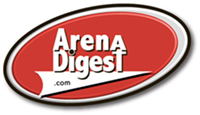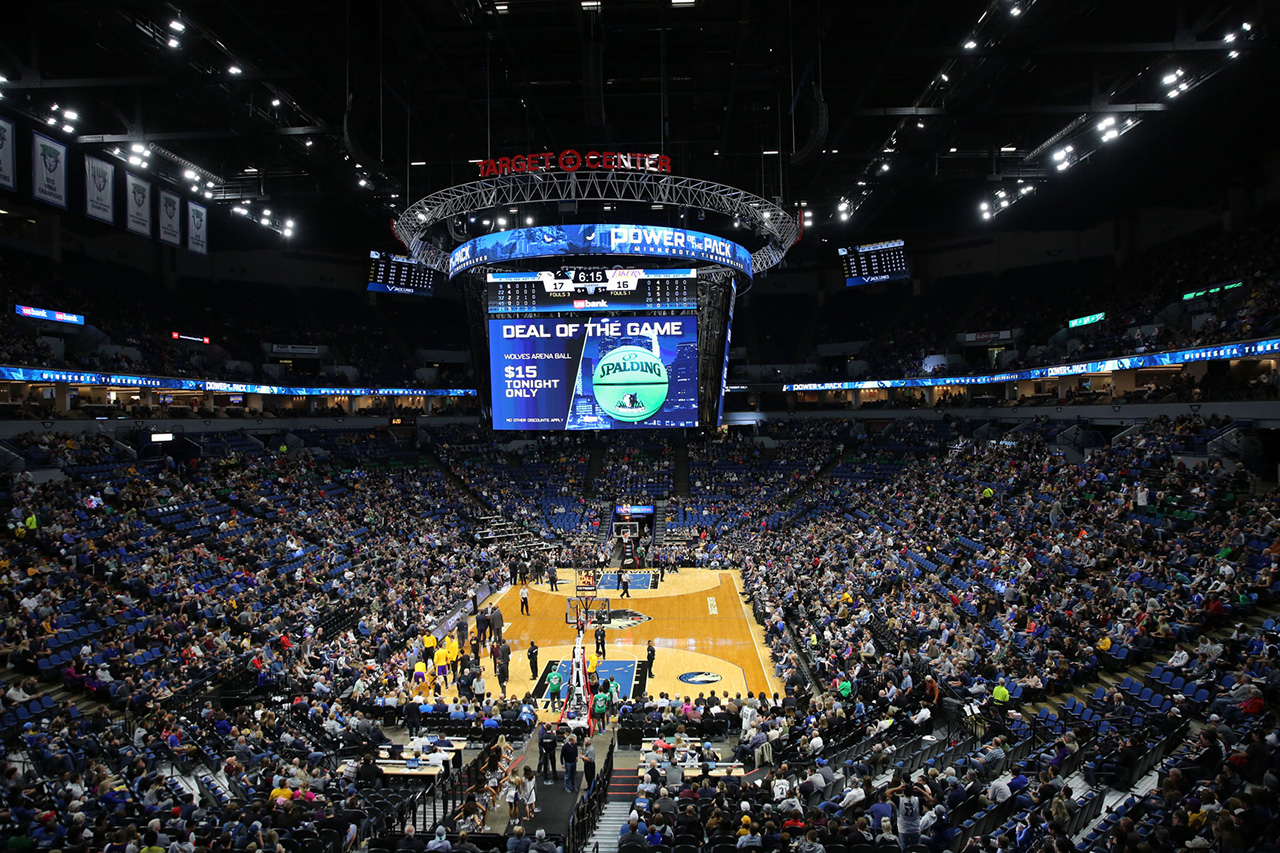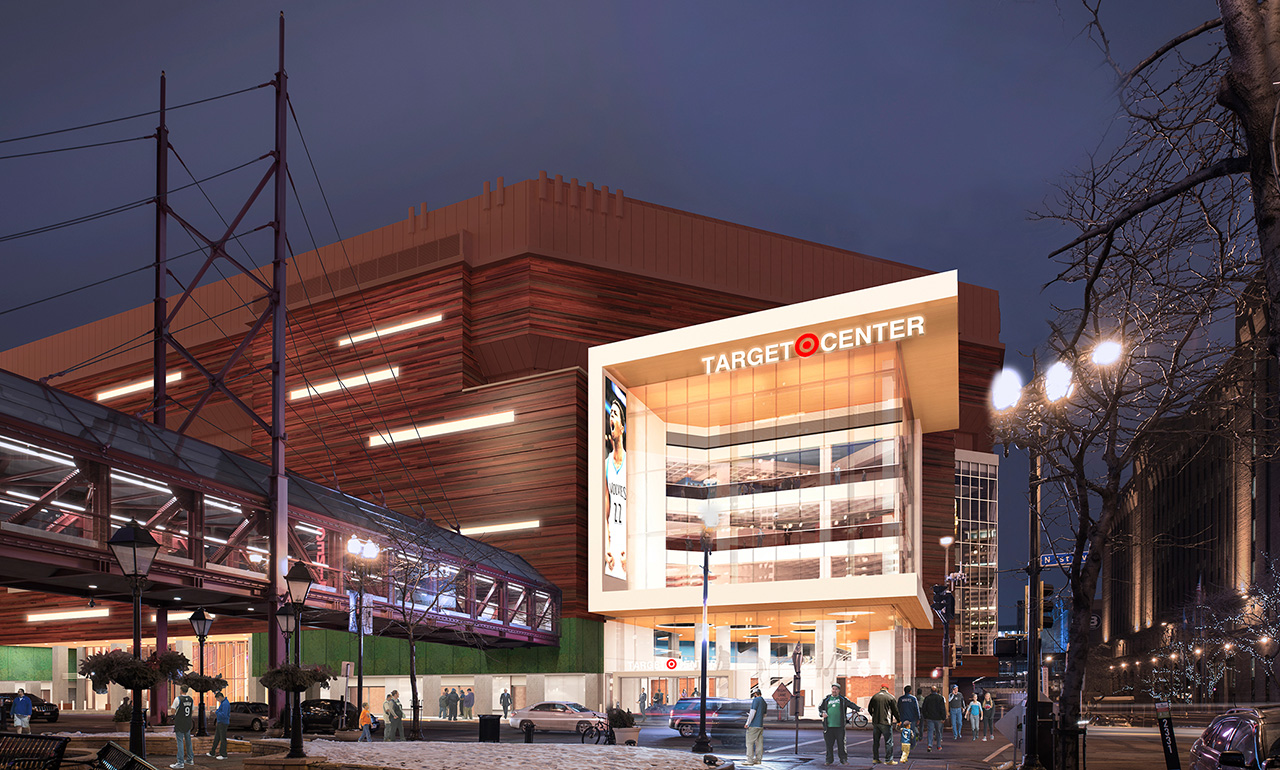We end 2017 with a countdown of the 10 biggest stories of the year on Arena Digest, as chosen by editors and partially based on page views. Today, #4: Sorely needed Target Center upgrades were unveiled for the 2017-2018 NBA season.
Let’s face it: Target Center was built on the cheap, as original team owners Harvey Ratner and Marv Wolfenson—Harv and Marv—privately financed a new arena for the Minnesota Timberwolves, opening in 1990. The original design relied on a fortress-like exterior and narrow concourses, but the bones were sound: it was connected to the rest of downtown Minneapolis via skyway, the sightlines in the upper bowl were pretty decent, and it generated revenue year-round with the inclusion of a fitness club in the lower level. Harv and Marv made their fortune via that local chain of athletic clubs.
That athletic club is still in the basement, and the area surrounding the arena is now built up with hotels, parking ramps, nightclubs/restaurants, and Target Field, home of the Minnesota Twins. As the area improved, the many deficiencies with the arena became apparent. When Xcel Energy Center opened in 2000, the many deficiencies of Target Center were made apparent. Where Xcel Energy Center featured huge windows opening to the Cathedral of St. Paul and the Minnesota State Capitol, very few outside views could be found at Target Center. Where Xcel Energy Center featured pleasant seating at all levels, including a spiffy club level, Target Center was lacking when it came to high-end amenities.
Because of financial issues, Harv and Marv ended up selling Target Center to the city of Minneapolis in 1995 after only five years of operations. Glen Taylor ended up buying the Timberwolves in 1994 and added the WNBA’s Minnesota Lynx to the mix, and the facility saw some minor changes—a green roof, a lower-bowl reconfiguration, the addition of a high-end club—as Minneapolis and arena manager AEG limped along with mostly the status quo.
Today, however, an arena built like a fortress won’t cut it, and in the age of the experiential, Target Center was competing not only with Xcel Energy Center but with Target Field and the new Minnesota Vikings stadium for local sporting dollars and sponsorships. So when the city of Minneapolis decided to move forward with a funding plan for the new U.S. Bank Stadium, money for Target Center upgrades was included.
All in all, $145 million was spent on upgrades, with the city, the team and building manager AEG all contributing to the cost of the project. The exterior was overhauled: gone is the gray paint, replaced by wood-style finishes and a new three-story entryway on First Avenue that both invites fans into the facility and provides great views of the downtown area from within. A new high-definitions scoreboard and arena signage, as well as a new sound system, provide the pop found in most newer NBA arenas. High-end clubs were added to the mix, concessions were overhauled, and the concourses were upgraded to provide a better traffic flow throughout the arena. Even the restrooms were updated. (The team behind the upgrades: architects Alliiance and Sink Combs Dethlefs, construction managers M.A Mortenson Construction and Thor Construction.)
The Target Center upgrades were necessary in this experiential age: the Timberwolves and Lynx are completing not only with other sports facilities, but other higher-end experiences for attention. Fans don’t spend an entire game sitting in their seats, so the supporting amenities need to be sharp. Target Center is now a solid competitor in the local sports-venue scene—a very important accomplishment given the competition.
Images courtesy Target Center.
Previously in our Top Ten Stories of 2017 List:
#5: New York Islanders Win Belmont Park Bid
#6: Philips Arena Renovations Begin
#7: Calgary Flames’ Arena Pursuit Stalls
#8: Carolina Hurricanes Move Closer to Sale
#9: NBA G League Continues to Grow
#10: Colorado Eagles to Join AHL



